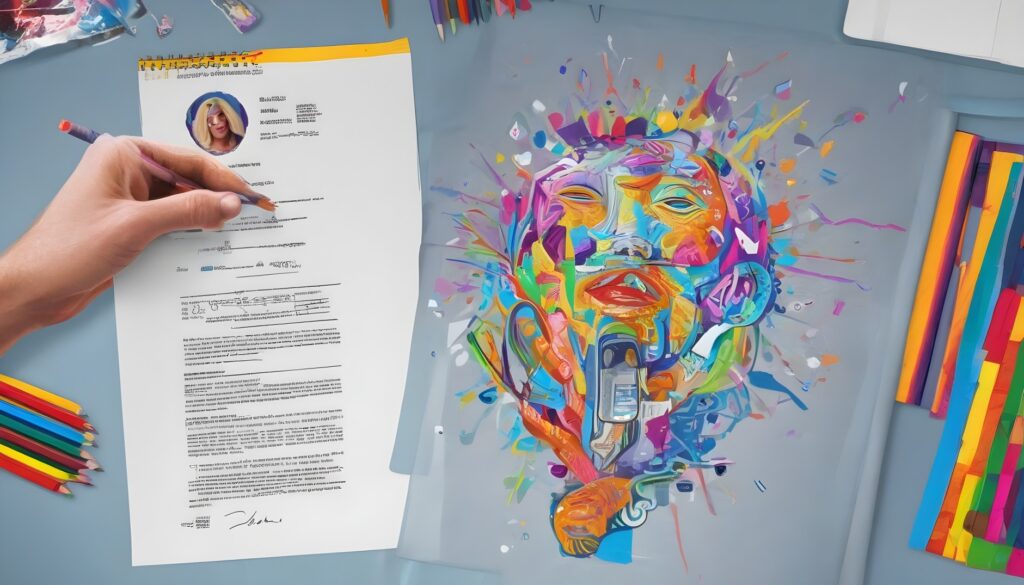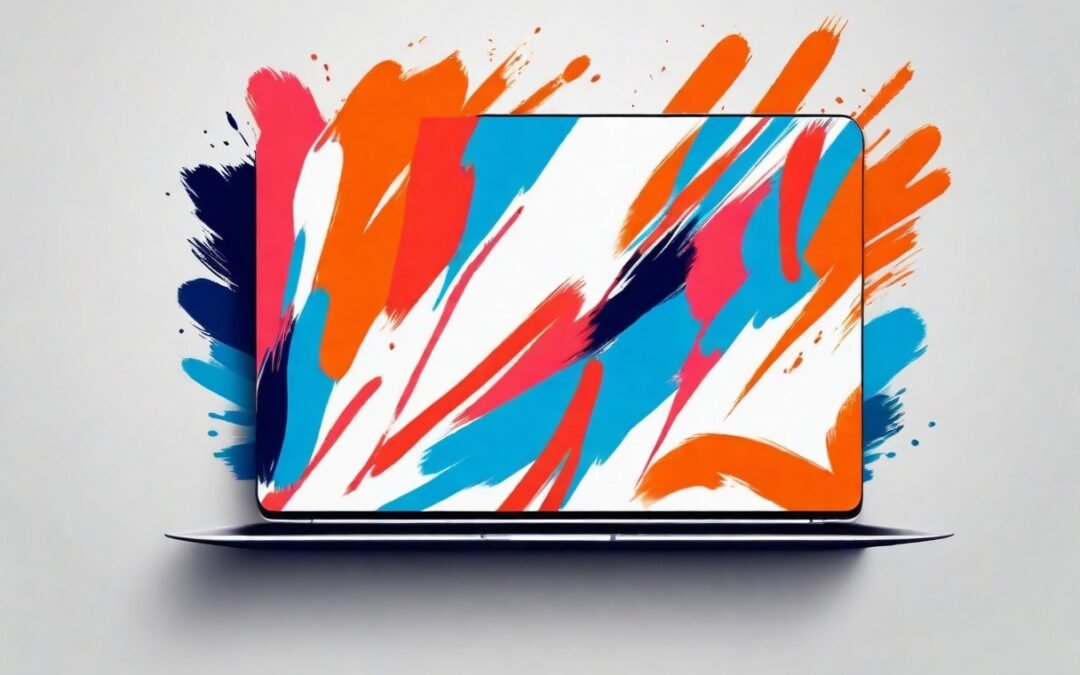Imagine yourself at a job fair, surrounded by passionate faces and well-dressed people. In a sea of career chances, your “Differences Between CV and Resume” handbook is like a reliable companion. They all have different roles to play in helping you land your ideal career. It’s like having superhero companions to help you explore the vast array of options.
In this investigation into the enigma surrounding job applications, “depth” is a keyword. Your resume serves as a treasure map for your career, highlighting all of the unseen highlights, including accolades, employment history, and scholastic successes. It provides a thorough overview of your work history as well as a detailed career roadmap.
Your resume is miraculous in its simplicity! It shines at choosing the exact phrases to highlight your amazing qualities. Consider it a preview of all the amazing things you have accomplished and your areas of expertise. Hiring managers will be enthralled by your super resume since it is tailored to the position you desire. It’s similar to having a secret tool to make an impression on people!
Thus, “depth” and “precision” are the magic words that open doors in the vast world of job applications to your professional destiny.
When to use each and why
1. Getting Ahead in Your Career: Recognizing Your Goals
Explore the differences between resumes and CVs, determining when and why each document takes center stage.
2. Creating Your Professional Image: Resume Crafting
Discover the power of the resume—your go-to for applying for jobs—where succinct narrative and noteworthy accomplishments produce an engrossing overview of your career path.
3. Academic Odyssey: A Curriculum-Based Journey Using Resumes
Explore the world of academia and learn why a resume becomes your study partner. It’s the full story of your academic adventures, customized for Ph.D. programs, research grants, and teaching positions.
4. Time is Crucial: Selecting Between a resume and a CV
Find the ideal opportunity to demonstrate your abilities. Discover the tactical
Length differences between CV and Resume:
CV vs. Resume: Decoding the Differences
Length Matters: A CV (Curriculum Vitae) is a long story, while a resume is a quick snapshot. CVs delve into your entire career, listing all experiences, publications, and more. Resumes, on the other hand, are concise and focus on relevant skills and experience for a specific job.
Purpose at Play: CVs aim for academia or research gigs, showcasing your achievements and contributions. Resumes are the go-to for job applications outside academia, emphasizing skills and experience tailored to a particular job.
Detail vs. Conciseness: CVs are the detail champions, leaving no stone unturned. Resumes value brevity, hitting the highlights to keep employers engaged and interested.
Personal Touch: CVs may include personal details like hobbies and research interests, giving a fuller picture. Resumes stick to professional aspects, maintaining a polished and job-focused tone.
Flexibility vs. Targeting: CVs adapt over time, growing with your career. Resumes are the chameleons, adjusting for each job application, and tailoring content to match what employers seek.

Understanding these differences arms you with the right document for the right occasion.
Unraveling the CV Mystique: A Deep Dive into Length and Content
The Storytelling Odyssey: A CV takes the scenic route, embracing a lengthier format to weave a rich narrative of your academic and professional journey. It’s not just a resume; it’s your career story, providing a comprehensive look at where you’ve been and what you’ve accomplished.
Beyond Job Titles: It goes beyond the standard job rundown, delving into your in-depth research and publications, showcasing the intellectual adventures you’ve embarked upon in your field.
Skill Showcase: Your CV isn’t just a job application; it’s a skills extravaganza. It lays out a comprehensive list of your talents, giving employers a detailed map of what you bring to the table.
Connecting the Dots: From affiliations and memberships to awards and honors, a CV connects the dots of your professional network, highlighting the communities you’re part of and the recognition you’ve earned.
Languages, References, and More: Your language proficiency, references, and even detailed project descriptions find a home in your CV. It’s the space to go beyond the basics, providing a holistic view of your capabilities.
Tailoring for the Academic Arena: When aiming for academic and research positions, a CV shines, allowing you to tailor your story for roles that require a more nuanced understanding of your journey. It’s not just about skills; it’s about the complete tapestry of your career.
Format differences between CV and resume
CV:
There is no correct way to write a curriculum vitae. The primary purpose of the CV is to fashion your academic career. However, there are ways to put together your CV to make it appealing to the eye and make sure that the person reading it gives it the attention that it deserves the trick is to be sure that your CV is constantly updated with your most current information including your current occupation, major accomplishments and projects
- General formatting guidelines for the CV.
- Times New Roman and Arial are common “go-to” fonts for professional documents, so please use one of these.
- Use eleven or twelve-point font and single spacing for the content of the CV, and for section titles, use fourteen-to-sixteen-point font.
- Make sure that the CV document is single-sided.
- Set the CV document to one-inch margins.
Resume
Resumes are like quick snapshots of your work history, meant to be short and sweet. They’re like the cliff notes of your career for job applications. But hey, just because they’re short doesn’t mean they can’t stand out! You can use templates, many even free on Microsoft Word, to make your resume look awesome and catch the employer’s eye. And guess what? There’s another site you can check out for even more cool templates

Purpose differences between CV and resume:
The purpose of a curriculum vitae (CV) and a resume varies depending on the professional context and industry expectations. Let us delve into the detailed purpose of each document
Curriculum vitae (cv)
à Comprehensive professional:
A CV’s primary goal is to provide a thorough and detailed overview of an individual’s academic and professional background. It provides a complete record of the individual’s qualifications, accomplishments, and contributions.
à Academic and research focus:
CVs are particularly prevalent in academic and research settings. They are intended to emphasize an individual’s educational background, research experience, publications, presentations, and contributions to the academic community.
à In-depth professional journey:
A CV is intended to provide a chronological account of an individual’s professional journey, including academic achievements, research endeavors, work experience, and any other information relevant to their field.
à Highlighting skills and expertise:
CVs provide a detailed breakdown of an individual’s skills, going beyond a simple listing. It enables the individual to demonstrate specific technical, research, language, and other skills related to their profession.
à Supporting academic applications:
A CV, which is commonly used for academic positions, research grants, and follow-up, helps with applications by providing a detailed understanding of a candidate’s academic and research contributions.
à Establishing credibility:
A CV seeks to establish an individual credibility and expertise in their field by including extensive information on publications, presentations, affiliation, and awards.
Resume:
à Tailored professional snapshot:
The primary goal of a resume is to provide a concise and tailored snapshot of the individual’s qualifications, skills, and work experience. It is geared toward presenting information relevant to a specific job application.
à Customized for a job application:
Resumes are tailored to each job application, emphasizing the most relevant qualifications and experiences that meet the position’s specific requirements.
- Showcasing professional achievements:
Resumes highlight key accomplishments, responsibilities, and skills acquired through professional experiences. The goal is to show that the applicant is capable of making an effective contribution to a prospective employer
à Corporate job applications:
Resumes are frequently used in corporate and business settings for job applications. They are designed to highlight an individual’s suitability for roles in the business environment.
à Quick employer impressions:
Resumes are designed to quickly capture an employer’s attention. They prioritize clarity, brevity, and readability to ensure that relevant information is readily available.
à Supporting career transitions:
Resumes help with career transition by emphasizing transferable skills and experiences that are relevant to the desired role.

Content differences between CV and resume
The main difference in content between a CV (curriculum vitae) and a resume lies in the depth and focus of the information presented. Here’s a breakdown:
- Length:
- CV: Generally, longer, often spanning multiple pages.
- Resume: Typically shorter, usually limited to one or two pages.
- Purpose:
- CV: Comprehensive overview of academic and professional achievements, suitable for academic and research positions or industries that value extensive details.
- Resume: Concise summary of relevant work experience and skills, tailored for specific job applications.
- Sections:
- CV: Includes sections such as Education, Research Experience, Publications, Presentations, Teaching Experience, and more. Emphasizes a holistic view of one’s professional and academic journey.
- Resume: Focuses on sections like Work Experience, Skills, and Education. Directly aligns with the requirements of a specific job.
- Detail Level:
- CV: Provides in-depth details about each academic and professional accomplishment, including specific projects, publications, and research experiences.
- Resume: Highlights key achievements, skills, and responsibilities in a more summarized format.
- Customization:
- CV: Generally, it remains static over time and is often used for various applications in academia and research.
- Resume: This is customized for each job application, emphasizing the most relevant qualifications for the specific position.
- Format:
- CV: This may include a chronological or functional format depending on the individual’s preferences and the industry norms.
- Resume: Typically follows a chronological format, showcasing a candidate’s work history in reverse order.
In essence, a CV is like the comprehensive novel of your professional life, covering everything from academic achievements to research endeavors. On the other hand, a resume is a succinct highlight reel, crafted to showcase the most relevant skills and experiences tailored for a specific job application.
Personal information differences between CV and resume
You may include personal information such as your date of birth, nationality, and even a personal statement in your CV. This provides a more complete picture of who you are professionally.
A resume, on the other hand, typically focuses on professional experience and skills rather than personal details. It is all about striking the right balance of personal and professional information for the job you are applying for.
Differences between the common usage of a CV and a resume
In the United Kingdom, ‘cv’ is commonly used to refer to a detailed document that includes all of your professional and academic achievements. It is the preferred method for job applications and academic positions.
On the other hand, in the United States and Canada, however, the term ‘resume’ is more widely used. It is a shorter, more focused document designed for specific job applications. So, it is like the difference between a full-length film and a highlight reel.
Flexibility differences between CV and resume
In terms of flexibility, a CV is more comprehensive and can be longer, whereas a resume is shorter and more focused on specific job applications. This means that a CV has more space to highlight all of your experiences and accomplishments, whereas a resume allows you to focus on the most relevant information for a specific job. It is like having the opportunity to tell your entire professional story rather than just the best parts of a specific role!
Conclusion: Subtle differences between CV and Resume
In the realm of resumes and CVs, selecting the appropriate instrument for the storytelling task is more important than deciding which is better. A CV is like a novel since it is long and detailed, telling the story of your academic and professional path in great detail. Conversely, a CV is your dynamic movie trailer—a succinct, role-specific display that highlights your experience and abilities.
Knowing when to release the grand novel and when to show off the intriguing trailer is crucial. The CV is your go-to document if you’re in academia or on a research route because it captures every detail of your academic journey. Regarding business dances or non-academic endeavors, the résumé takes center stage, offering a concise, customized sneak peek at your professional abilities.
The decision between a CV and a resume ultimately comes down to selecting the story that best fits your professional stage. This means that you should embrace the narrative technique when creating your CV or resume and allow it to tell the compelling story of your professional experience, whether you’re writing a comprehensive masterpiece or a brief highlight.
Empower Your Career Journey: Unlocking Success with ATS-Optimized Tools and Services:
Unlock the path to career success effortlessly by exploring our suite of offerings.
Begin with a click to access our collection of free ATS-optimized CV/resume templates tailored to elevate your professional presence. Take the next step by delving into our CV/Resume ATS optimization services, where your document undergoes a transformation for maximum impact. Explore the testimonials of those who have experienced the difference firsthand.
Additionally, if you wish to enhance your personal or brand presence on LinkedIn, we offer profile optimization services for that purpose.
But that’s not all – elevate your entire professional persona with the ultimate guide we’ve curated for you. Uncover the secrets of ATS resume optimization, delve into the intricacies of LinkedIn profile optimization, and discover invaluable tips on finding the best resume writer in your local area. Your journey toward career excellence begins here, ensuring you stand out in a competitive market.
Don’t just navigate the job market; conquer it with the resources and expertise provided by our comprehensive suite.
Seize every opportunity on your career path – start your journey now!





0 Comments